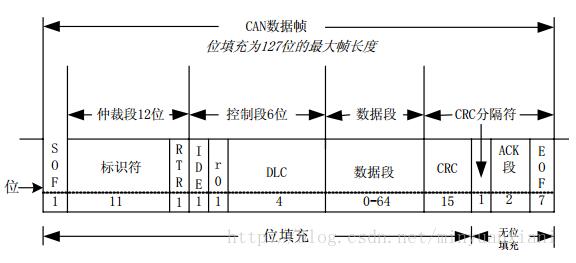
Privacy statement: Your privacy is very important to Us. Our company promises not to disclose your personal information to any external company with out your explicit permission.
The CAN bus load ratio is only a macroscopic parameter, and it cannot fully evaluate the effectiveness and scalability of the bus. The definition of the load ratio in the industry is the ratio of the actual data transmission rate and the data transmission rate that can theoretically be achieved. This paper mainly describes how the CAN bus load ratio can be calculated and the CAN bus load rate must be less than 30%. Follow Xiaobian to find out.
CAN bus load rate must be less than 30%The CAN bus load rate does not have to be less than 30%, because in 12 years Fiat can still guarantee normal communication at a load rate of 70%, so this 30% is just the best choice.
The higher the load rate is, the more data is needed to be sent, and the more likely the communication delay of the lower priority node is.
According to the experiment, under the condition of 30% load factor, the average packet transmission time of the high-priority node is almost the same as the theoretical transmission time; while the low-priority one has the delay of about 20%; when the load rate reaches 60% Under the circumstances, the node with the highest priority has a delay of at least 25%, the delay with the lowest priority reaches 4 times, and it cannot meet the real-time performance at all; when the average bus utilization rate exceeds 70%, the communication of the bus will be With the possibility of congestion, extreme situations can cause the appearance of error frames.
A. CAN standard frame format

B.CAN extended frame format

C. Interframe spacing

Hypothesis
Ui: The percentage of occupied buses for each message frame
L: the total length of the packet
C: bus occupancy time for the message
N: the number of bits to fill
t: the bit time for the hair rate (also known as baud rate)
Then there are:
L = N + 8d + g + 13
C = L * t
Ui = C / T
However, the bus load ratio is the sum of the bus percentages occupied by each information frame.
U = U1 + U2 + U3 + . . . . .
g is the total number of control bits in the CAN message (standard frame g = 34, extended frame g = 54)
The value of g is to take only the bit filling part to remove the data segment;
13: No bit padding + interframe space
Network load rate algorithm example:

The network load ratio is the percentage of the bandwidth occupied by the network bus data within 1 s. Taking the above network matrix table as an example, assuming that the bus speed is 500 Kbps, there are multiple frames of signals in the network, the load rate occupied by each signal frame is calculated, and the total network load ratio is obtained by addition. The FBCM_1 / FBCM_2 two frames of the load rate algorithm is as follows:
Load rate 1 = (1000ms / 20ms) * 111 / 500000 = 0.0111 = 1.11%
Load rate 2 = (1000ms / 10ms) * 111 / 500000 = 0.0222 = 2.22%
The formula 111 is an 8-byte data frame with no padding bits.
111 = 34 + 13 + (8 byte X 8bit) = 47 + 64
Here we see such a formula in TTCAN:

According to the CAN protocol, the same level lasts 5 bits, and the next bit is inserted at the level of the 1st bit and the 5th bit inversion.
It can be seen that: (34 + 8s)/5 gets the number of padding bits, so for a complete number of bits in a frame, we can assume that we have an upper interval bit.
Then: Padding: (34 + 8s)/5
Data bit: 8s
Message format bits: 34 + 10 + 3 = 47
Control Valve, Flow Control Valve, Hydraulic Control Valve, Proportional Directional Control Valve
October 09, 2024
September 24, 2024
Письмо этому поставщику
October 09, 2024
September 24, 2024
May 14, 2024

Privacy statement: Your privacy is very important to Us. Our company promises not to disclose your personal information to any external company with out your explicit permission.

Fill in more information so that we can get in touch with you faster
Privacy statement: Your privacy is very important to Us. Our company promises not to disclose your personal information to any external company with out your explicit permission.